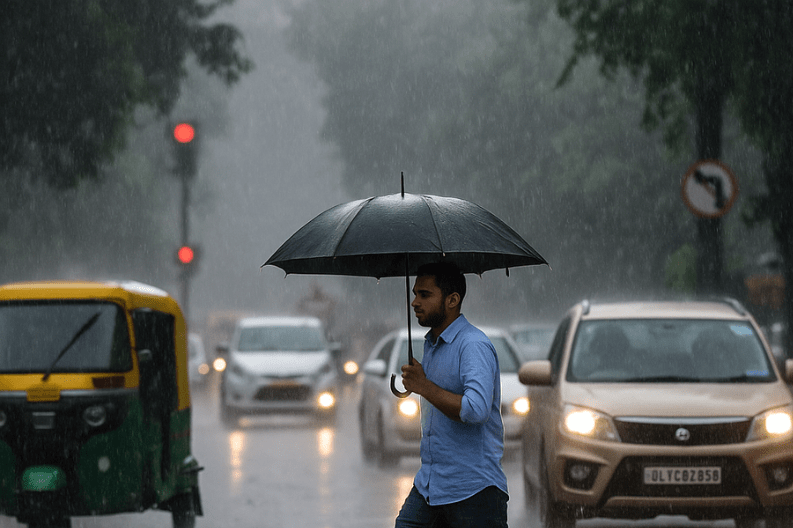The heavy rain forecast today has brought relief and cleaner air to Delhi after a night of refreshing showers. Rain across several parts of the city helped improve air quality, giving residents a much-needed break from pollution. According to the India Meteorological Department (IMD), many areas in Delhi received 10 to 13 millimeters of rain overnight. The showers washed away dust and pollutants from the air, making it fresher and cleaner.
The minimum temperature dropped to 20.4°C on Monday morning. It was almost four degrees lower than Sunday’s temperature. This sudden drop made the morning more pleasant for people who had been dealing with hot and humid days. IMD officials said the rain came from a western disturbance moving across northwest India. They also predicted more showers later this week.
The Central Pollution Control Board (CPCB) confirmed that Delhi’s air quality improved overnight. The city’s average Air Quality Index (AQI) fell to 123 at 7 AM, compared to 159 a day earlier. Although still in the “moderate” range, the drop showed clear improvement. However, some areas performed differently. Anand Vihar recorded an AQI of 205 (poor), while Lodhi Road showed a much better reading of 78 (satisfactory).
The city’s PM 2.5 level stood at 63 micrograms per cubic meter, slightly above the safe limit of 60. The PM 10 level was 78 micrograms, comfortably below the limit of 100. Experts said that if the rain continues for a few more days, pollution levels could fall even further.
Data from IMD showed varied rainfall across Delhi. Safdarjung received 10.3 mm, Pitampura saw 13.5 mm, and Mayur Vihar reported 11 mm. Other places such as Pusa (8.5 mm), Palam (3.6 mm), and Janakpuri (4.5 mm), also received light to moderate rain. Most areas benefited from the overnight showers.
Environmental experts explained that rain helps purify the air by trapping fine particles and bringing them down. It also settles dust from roads and construction sites, reducing smog. However, they warned that air pollution could rise again as winter and festival seasons approach. Firecrackers, traffic, and stubble burning in nearby states often worsen the air quality during this period.
In Punjab and Haryana, farmers are preparing for the next crop cycle. Yet, stubble burning in October and November continues to cause heavy pollution in Delhi and the NCR. Recent reports show that some farmers are shifting to pulses and oilseeds, which reduce residue and improve soil health.
Chandigarh, the capital of both Punjab and Haryana, also experienced light rain on Sunday night. The IMD said this system might bring more rain to Delhi, Punjab, Haryana, and western Uttar Pradesh in the next 24 hours. These showers will help cool the region and clear the air.
For Delhi residents, the rainfall was a welcome change. It cooled the weather and gave temporary relief from poor air. Meteorologists expect similar conditions throughout the week. They advise people to carry umbrellas and stay updated with the daily weather forecast.
In conclusion, the heavy rain forecast today has provided Delhi and nearby regions with cleaner air and cooler weather. The improvement may be short-term, but it highlights the importance of weather, awareness, and pollution control in creating a healthier environment for all.



